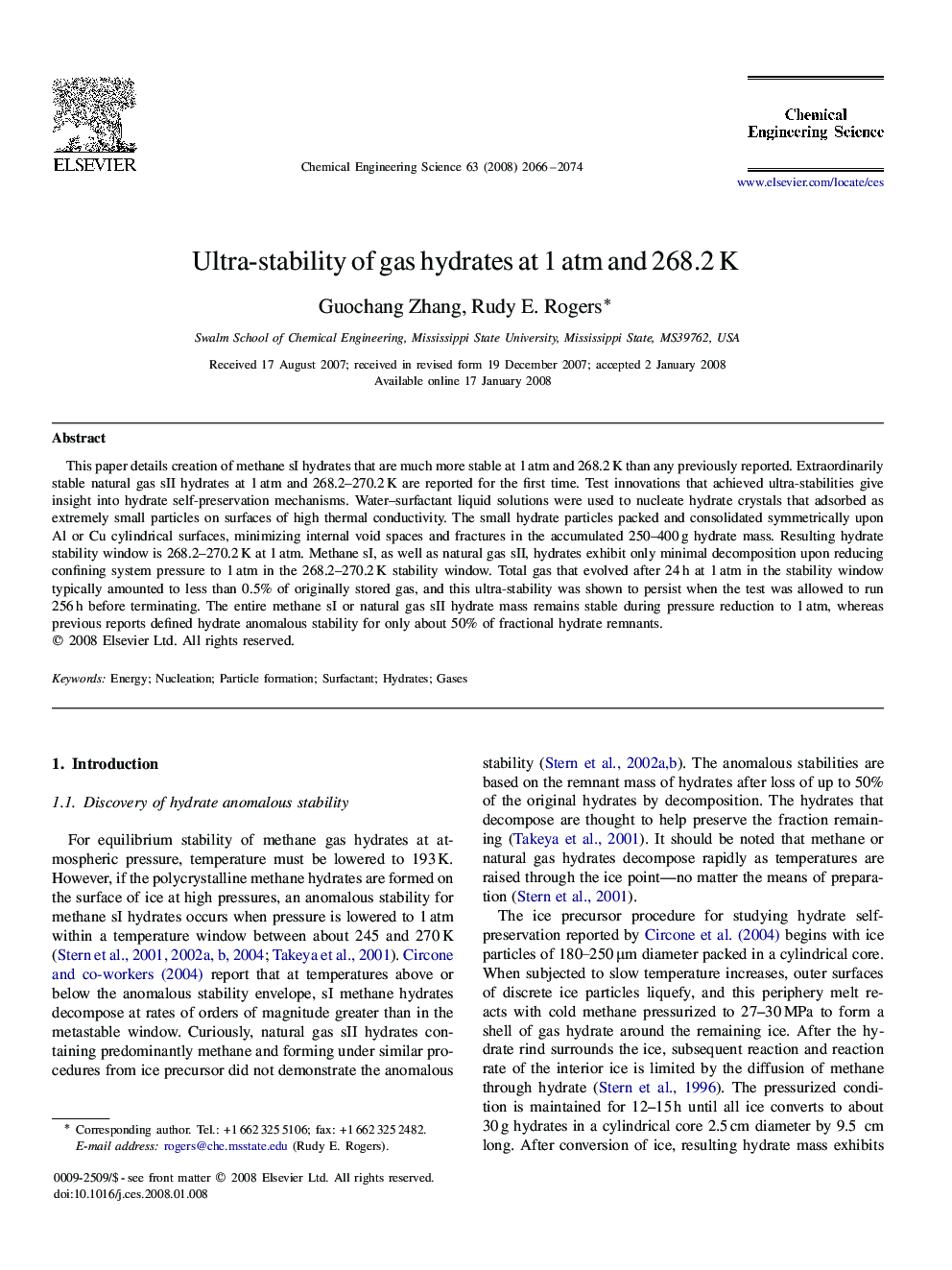| Article ID | Journal | Published Year | Pages | File Type |
|---|---|---|---|---|
| 157876 | Chemical Engineering Science | 2008 | 9 Pages |
This paper details creation of methane sI hydrates that are much more stable at 1 atm and 268.2 K than any previously reported. Extraordinarily stable natural gas sII hydrates at 1 atm and 268.2–270.2 K are reported for the first time. Test innovations that achieved ultra-stabilities give insight into hydrate self-preservation mechanisms. Water–surfactant liquid solutions were used to nucleate hydrate crystals that adsorbed as extremely small particles on surfaces of high thermal conductivity. The small hydrate particles packed and consolidated symmetrically upon Al or Cu cylindrical surfaces, minimizing internal void spaces and fractures in the accumulated 250–400 g hydrate mass. Resulting hydrate stability window is 268.2–270.2 K at 1 atm. Methane sI, as well as natural gas sII, hydrates exhibit only minimal decomposition upon reducing confining system pressure to 1 atm in the 268.2–270.2 K stability window. Total gas that evolved after 24 h at 1 atm in the stability window typically amounted to less than 0.5% of originally stored gas, and this ultra-stability was shown to persist when the test was allowed to run 256 h before terminating. The entire methane sI or natural gas sII hydrate mass remains stable during pressure reduction to 1 atm, whereas previous reports defined hydrate anomalous stability for only about 50% of fractional hydrate remnants.
